A few who made a difference
by Safir Rammah
Date:08-05-05
Source: The Dawn,
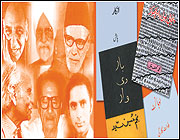
The Punjabi literature produced on both sides of the Punjab border since partition is surprisingly equally robust and of a matching and complementary high quality. This is in spite of the fact that there is no official recognition for the Punjabi language in Pakistan or in the Pakistani Punjab province, while Punjabi is one of India 18 national languages and the official language of India Punjab province.
The lack of official patronage may be a factor in the Punjabi language taking a backseat in formal usage in Pakistani Punjab. However, it has not affected the love of the common Punjabi for his language, culture and way of life. This is evident from the large number of creative Punjabi writers and research scholars and the quality of the Punjabi literature they have produced in Pakistani Punjab.
The following presents a few randomly chosen examples from the vast galaxy of Punjabi writers, scholars and others, who have played an important role in the development of various aspects of the post-partition modern Punjabi literature in both sides of the Punjab.
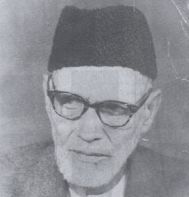
Dr Faqir Mohammad Faqir (1900-1974): Dr Faqir was a well known Punjabi poet before partition. He published his first collection of Punjabi poetry, Sada-i-Faqir, in 1924 and for a number of years recited his Punjabi poems in the annual gatherings of Anjuman Himayat-i-Islam in Lahore.
Soon after the establishment of Pakistan, he embarked on a one-man mission to promote the Punjabi language and literature a task made almost impossible by the prevalent atmosphere of unquestioned acceptance of Urdu as the manifestation of Pakistani Punjab nationalistic aspirations.
He launched a tireless campaign to enlist the support of his many friends from Lahore literary circles for the cause of Punjabi. The first formal meeting of a small group of writers to deliberate on the future of Punjabi in Pakistan was held at Dayal Singh College, Lahore in July 1951. The meeting, for which Dr Faqir had hand-delivered the invitation cards, was attended by Abdul Majeed Salik, Syed Abid Ali Abid, Dr Muhammad Baqir, Dr Muhammad Din Taseer, Babu Feroze Din, Sufi Ghulam Mustafa Tabassum and a few others, who agreed to establish an organization by the name of Pak Punjab League. Dr Faqir was assigned the task of bringing out a Punjabi magazine, which he started publishing under the title Punjabi in September 1951.
That was followed by the first Punjabi Conference in Lyallpur (Faisalabad) in 1952 and the establishment of Punjabi Adabi Academy, with Dr Faqir as one of its active members. The Punjabi Adabi Academy soon started publishing a long line of books of Punjabi classical literature, many of them edited by Dr Faqir, including the poetic works of Baba Farid, Bulleh Shah, Waris Shah, Peelo, Ali Haider, Mian Muhammad Bakhsh and many others.
His relentless efforts helped in establishing MA classes in Punjabi at Punjab University, Lahore, in 1970. During the final deliberations by the University Council to vote on this proposal, he literally camped in the Vice Chancellor’s office threatening him to live there until the proposal was adopted.
Dr Faqir was a persistent and persuasive activist for the promotion of Punjabi. With his encyclopaedic knowledge of the Punjabi language and literature and outstanding skills as a writer, research scholar and editor, he inspired a whole generation of Punjabi writers and pioneered the Punjabi literary movement in Pakistani Punjab. Dr Faqir deservedly earned the title of Baba-i-Punjabi (Father of Punjabi).
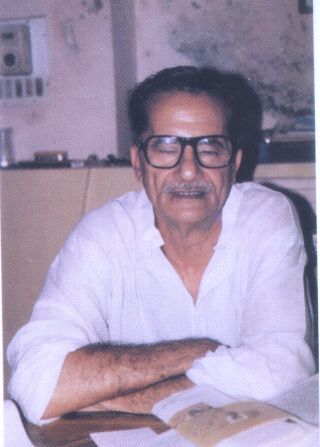
Muhammad Asif Khan (1929-2000): Perhaps the best research scholar of the Punjabi language and literature, well versed in Hindi, Sanskrit, Pushto, Balochi, Sindhi, and even Japanese, Muhamamd Asif Khan did more serious research work during his lifetime than would be possible to produce by a well-endowed large institution or a university department.
He did manage a so-called institution, Punjabi Adabi Board, single-handedly, for the last 18 years of his life. Punjabi Adabi Board received a meagre government grant that was not enough to rent a proper office or hire a peon to assist him. Yet, this essentially one-man institution published more than 200 books, including edited and corrected versions of almost all classical poets with Muhammad Asif Khan’s thoroughly researched introductions that are the finest examples of scholarly work in Punjabi. He penned more than 100 research articles that raised the bar for such academic scholarship in Punjabi for a long time to come.
A huqqa, an occasional cup of tea that he made himself, an inquisitive mind and a burning desire to serve his language was all that he needed to work tirelessly for more than 50 years to provide a deeper understanding of Punjabi literature.
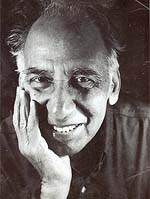
Balwant Gargi (1916-2003): Balwnat Gargi wrote Punjabi novels, a biography and sketches of contemporary writers, that established him as one of the best modern Punjabi prose writers, but far more important than his other prose writings was his life long work on the Punjabi play. Many of the plays that he wrote, produced and directed have now become modern classics.
He had studied the Russian theatre and, during his stay in the United States, he directly learned from Elia Kazan, who was a genius of American theatre and cinema. At home, he travelled all across India to collect material for his celebrated book Folk Theatre of India, written after thorough investigation and study of traditional folk theatres in all parts of India and by interviewing hundreds of actors and dancers. This book earned him the Sahitya Akademy Award and a lasting international reputation.
A special post of professor and director for the theatre was created for him at Punjab University, Chandigarh, where he established the department of Indian theatre on the campus. That is where some of his most celebrated plays were created, Such as ‘Loha kutt’, ‘Kanak di balli’, ‘Kesro’, ‘Dhuni di aggan’ and many others. His passion and genius played a very important role in bringing the Punjabi theatre from its centuries old rustic traditions of folk plays to the modern theatre.

Bhapa Preetam Singh (1914-2005): How could we not have a Punjabi publisher of Bhapa Preetam Singh’s calibre when we find so many others who had dedicated their lives, in a typical Punjabi way, to all other aspects of Punjabi language and literature?
Founder of the famous Navyug publishing house in 1951, he dedicated himself to publishing the best of modern Punjabi literature. He introduced many Punjabi writers who became household names and published famous writers, including Nanak Singh, Gurbax Singh Preetlari, Amrita Pritam, Kartar Singh Duggal, Shiv Kumar Batalvi, Devendra Satyarthi, Balwant Gargi and many others. His contributions towards popularizing the modern Punjabi literature are widely recognized.
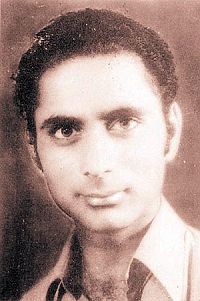
Avtar Singh Sandhu Pash (1950-1988): The best known name in the Left and progressive movements in modern Punjabi literature, Pash followed an old Punjabi tradition of fighting against oppression and it was almost as if he was a reincarnation of one of the renowned Punjabi freedom fighters.
He took the banner of the Naxalite movement to actively participate in radical politics that landed him in jail for a couple of years on a trumped up murder charge, and finally got him brutally murdered in broad daylight at the age of 38.
The intensity of his passion gave some of the best revolutionary poetry to modern Punjabi literature and an alternative to the romantic poetry of Shiv Kumar Batalvi, whom he had admired as a teenager and then challenged by confronting him personally and in writing, creating a fascinating legend of the clash of two major schools of thoughts of Punjabi poetry.
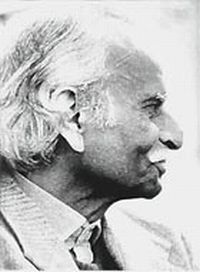
Najm Hussain Syed (1936-): It is simply not possible to capture the essence of Najm Hussain Syed’s vast and varied contributions to modern Punjabi literature in a brief note. There is no Punjabi University in Pakistan, except perhaps the one he runs at 49 Jail Road, Lahore, where each Friday a few dedicated souls get together at his baithak to explore the intricacies of the Punjabi literature.
Besides breaking new grounds in every genre of Punjabi literature on which he has authored more than 22 books of poetry, plays, criticism and expositions of Punjabi classics, Najm Hussain Syed has been leading a quiet, but highly effective, crusade to keep the Punjabi literary tradition alive. A large number of modern Pakistani Punjabi writers and poets have learned from him and are inspired by him directly or indirectly.
It is Punjabi writers, poets and scholars like the few mentioned above and many more like them in India, Pakistan and abroad who have led the continued progress of the 1,000 year old Punjabi literary tradition to serve the needs of 120 million Punjabis in the 21st century.
It would be nice if Punjabi is taught at Punjab’s schools, and it must be, but the progress of the Punjabi language and literature has never relied on official patronage. Learning Punjabi in Punjab’s schools and universities will bond those with their own motherland who walk away with educational degrees without having any clue of its high literature and culture, and a snobbish attitude towards the Punjabi language.